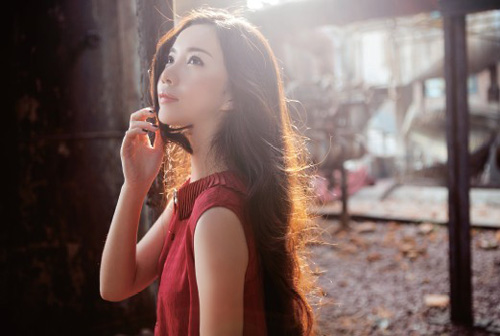Soft light and hard light are a pair of “worship” brothers, each with its own charm and individuality. When we are shooting, we often have to consider how to choose the light. Then in the five characteristics of light, the first consideration is light quality. Light quality is the nature of light, which can also be interpreted as the “soft” and “hard” of light.
Table of Contents
What is Soft Light
Soft light is also called soft light, scattered light, etc. It is a kind of diffuse light. There is no clear directionality, the contrast on the illuminated object is small, and the projection is not obvious. Such as cloudy light, indoor studio flash with soft box, etc.
We can also use some accessories or methods to soften the light. If some devices (such as soft box, diffuser screen, soft light paper, reflective umbrella, etc.) that can diffuse light are attached to the flash, the light emitted is diffuse.
Soft light is characterized by soft light, uniform intensity, relatively small light, and the resulting image has little contrast. The photographed person is delicate and soft, and the color reproduction is relatively accurate.
Sculpting Result of Soft Light
Soft light (scattered light) illumination has soft light quality, no significant light-receiving surface and backlight surface, no significant shadows, soft contrast, and smooth shadows.
Generally speaking, the area of soft light illumination is larger, the proportion of light is well-proportioned, and the brightness of the illuminated object is relatively close. Due to the lack of contrast between light and dark in soft lighting, the image is mediocre, which is disadvantageous to the three-dimensional expression of the subject, and the expression of texture is also weak. The embodiment of the subject’s body shape should be completed by the color of the subject and the difference between its own light and shade.
Soft Light Portrait Lighting
Soft-tone portrait lighting is a uniform lighting method in which the total tone is a neutral color. This kind of lighting basically uses multiple lamps and several reflectors to maximize direct, diffuse and reflect light to the model.
In order to achieve uniform, comprehensive, soft-toned and beautify the lighting effects of the model, photographers generally use 3 indoor studio lights and some reflectors.
Use two large 300W spotlights with diffusers side by side in front of the model. The two lights should be at an angle to the model and the aluminum-coated reflector mounted on the bracket in front of the model. The reason why the uniform lighting effect can be achieved in this way is to maximize the intensity of the reflected light. Therefore, the reflector is a critical part of lighting. The hair light should be set quite high and placed on the left side of the model, just behind her head. Some reflectors can be placed behind and on both sides of the model to increase reflection.
Specific Usage of Soft Light
When shooting, first turn on the two soft spotlights in front of the model and angle them so that they can illuminate the model evenly. At the same time, the aluminum-coated reflector mounted in front of the model can reflect the maximum amount of light upward. A reflector is placed behind the model, and a white, long cylindrical reflector is placed on the left.
Then, set up the hair light and raise it to produce strong and uniform lighting on the model’s left shoulder. The headlight should be high enough to hit the light directly on the reflector mounted on the bracket in front of the model. Move your hand back and forth on each reflective surface to check its reflective effect. After finally deciding on the exposure level, you can start shooting.
Some special lamp types (such as milk white bulbs, frosted bulbs, etc.) are used indoors, or some accessories are installed in front of the lamp, which can also create a soft light result. Commonly used, such as installing a diffuser in front of a flash lamp or setting a diffuser and a soft umbrella in front of an incandescent lamp.
About Reflected Light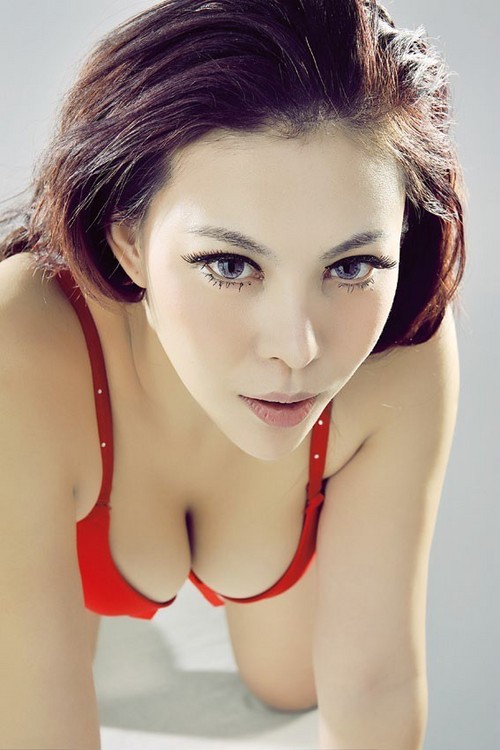
As shown in the picture, in order to reflect the model’s skin is smooth, transparent and sexy, a combination of double-sided inverse enveloping light was used when shooting. Most of them use the diffusion in the reflected light.
Put two reflectors in front of the model and on the left and right. And put a side backlight on the side and back of the model. In this way, the main light source comes from the side and rear of the model, which makes the model feel like double contour light.
The model’s face lighting mainly comes from the diffuse reflection of the reflector. This diffuse reflection is extremely soft, making the model’s skin delicate and rich in layers. When shooting, try to highlight the sexy and subtle light changes of the model. The seemingly soft light has a very important direction of ambient light. The overall tone of the picture should be controlled as far as possible in the middle gray area of the tone and the rich gradation changes in the sixth, seventh, and eighth areas.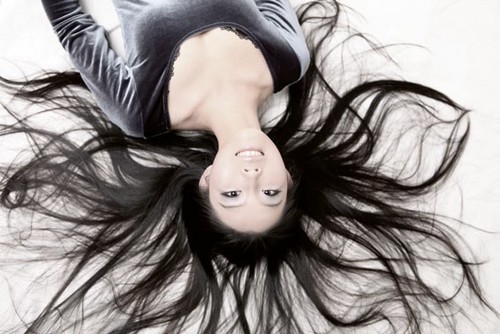
About Softening Light
The picture above is an overhead view. The carefully treated long hair adds to the decorativeness of the picture. If you want to highlight the soft, dreamy, and romantic feeling in the lighting, soft light is most suitable. This time, I chose to use two larger softboxes for uniform lighting under the head. The large-area soft lighting is delicate and soft, with small contrast, forming a hazy and tender effect.
What is Hard Light
Hard light is strong direct light. Such as sunny sunshine, naked lights in studio lights, etc. The physical characteristics of the model surface illuminated by hard light are as follows: the light-receiving surface, the backlight surface and the projection are very vivid, the contrast between light and dark is large, and the contrast effect is obvious. Helps to express the details and texture of the light-receiving surface.
Hard Light Modeling Results
A projection can be formed under hard light. Not only can it increase the depth and perspective of the picture, but it also forms a rhythmic rhythm with the light and dark intervals of the bright part, increasing the atmosphere and beauty of the picture. Therefore, the hard light source is suitable for expressing the character’s personality, specific themes and creating the atmosphere of the picture.
Hard Light Portrait Lighting
Recommend to everyone to use the main and auxiliary two hard light sources. The two hard lights must first distinguish the primary and secondary. Then determine the contrast, and finally determine the theme of the picture. For example, in order to highlight the demeanor of the character, a honeycomb can be added to the main lighting lamp to make the lighting area of the hard light source smaller. There are more specific directions, pay attention to the lighting of the dark parts. So use another hard light source to fill the dark part of the character.
Highlight the Environment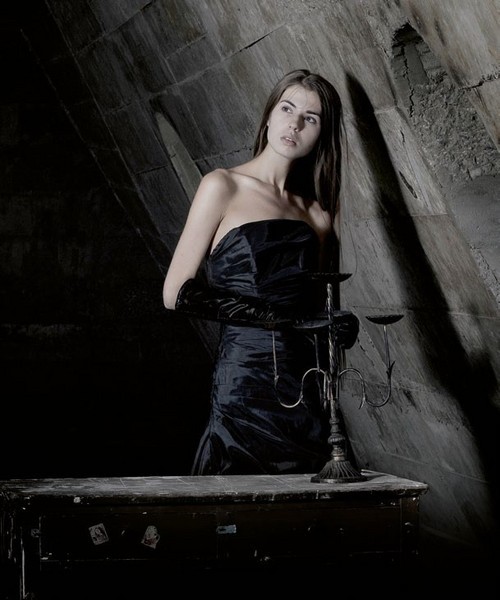
When shooting environmental portraits, the light must be in harmony with the environment and highlight the characteristics of the environment. As shown in the picture, in the cold and old environment, a large change in light and shade is needed to match the atmosphere and the mood of the characters. So use hard light naked lights to directly illuminate the characters, highlight the theme and darken the surrounding environment. And it created an obvious projection, which properly rendered the atmosphere. This is also a characteristic of hard light.
Show Personality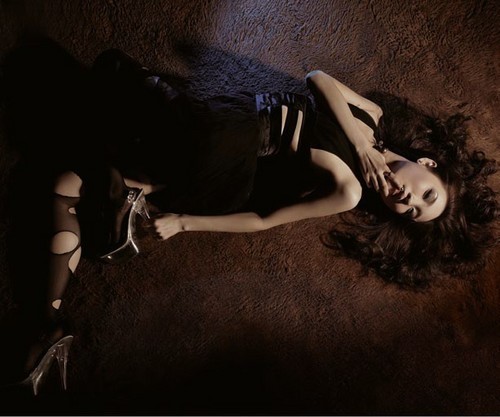
Photographers often use hard light to shape individual themes. As shown in the picture above. In order to reflect the personality and charm of the theme, a total of three hard light sources are used. A lamp illuminates the face of a character to create a three-dimensional main image. One lamp illuminates the legs of the figure, shaping the lines, and the third lamp is close to the ground. It usese a higher color temperature to enhance the atmosphere in color. The use of such a combination of hard light not only highlights the key points. But also distinguishes the primary and secondary. At the same time, there is also a change in color temperature. That is particularly prominent for the texture and texture of the model.
Reasonable Combination of Soft Light and Hard Light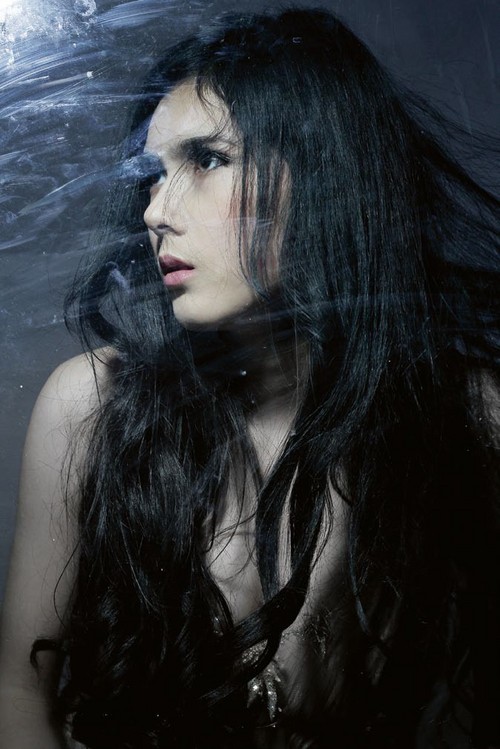
Hard light brings a large light ratio, and soft light shapes a small light ratio. Hard and soft are not incompatible. Photographers often mix these two types of light.
The mixed use of soft, hard and light can well shape the three-dimensional feeling. And enhance the texture and clarity of the model. Soft light fill light is very convenient to control the level of dark parts and adjust the light ratio and contrast arbitrarily. It is also easy to achieve a bright and textured effect.
As shown in Figure 4 above, the photographer used a 600W hard light as the main light. And two 400W softboxes are to fill the shadows. In this way, the shadows are brightened to a small light ratio of 1:2 with the highlights. Figure 5 shows the light distribution method with large light ratio.
Pay attention to the height of the main light (hard light) when lighting, and carefully observe the projection direction it produces so as not to damage the structure of the character. Regardless of whether it is soft light or hard light, we have to choose the light according to the theme, character characteristics and customer requirements in the lighting. When choosing light, we basically start with five characteristics, namely, light quality, light position, light ratio, brightness, and light color. This is inseparable from any lighting.
